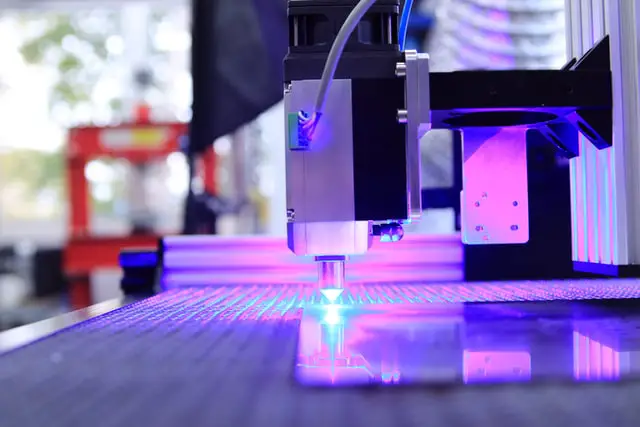6 Things You Didn’t Know About the Photonics Industry

Did you even stumble upon a person who says technology is bad and lives like Diogenes? Probably not, most such people are hypocrites and use the benefits of today’s science and technology daily. This is because modern technology is just unavoidable, and for many good reasons. Of course, one could live with only robes on the street or in a mud hut with no outside contact. There is a tribe near Sri Lanka that has a great tribe that is still untouched by us.
However, even if we still acknowledge that technology is integral to humanity, no one is aware of just how we depend on it. Only a few people are aware of how we use technology on a daily basis and how big it goes. The photonics industry is a major player here, and many people will just say what industry? Here are 6 things you didn’t know about the industry.
1. Lasers
Many people have no idea what this industry is all about, and they are missing out big time. Even when they hear about the photonics industry, everyone thinks it is just some lightning. Light is very important for this industry, but most of this knowledge is used for making lasers. Let’s remember, laser stands for light amplification by stimulated emission of radiation, so now it all makes sense.
As portrayed by popular media, lasers are very bright and more focused than regular light sources. Of course, we do not have lasers that can destroy planets right now, but we have some pretty good ones. These focused sources of light are great for many reasons, but two are integral. The force of these lasers can be used for some quite precise and sensitive jobs. Second, light is very fast, and thus using lasers for sending and receiving information is also fast.
2. Life sciences
The industry is especially important for life sciences, even though they may seem different. Many analytical procedures in life sciences can be conducted using both light and lasers. One might even say that the spectrophotometer is the eye of a biochemist. The connection goes even way beyond that when we take into consideration different types of microscopes.
New lasers have also made a big breakthrough when it comes to infrared spectroscopy. Specifically, when it comes to Raman spectroscopy, which evolved at light speed over the past 5 years. Raman can now be used for protein analysis, where it is especially useful in determining amyloid fibrillation. As the industry grows, so do the optical methods that are integral for life sciences.
3. Optical data
Optical data is defined as data that is read or transferred to another device using light. This was briefly mentioned but it should always be known that light is currently the fastest thing around. By thing, this does not mean a physical object because again, light is a subject of quantum nature. If we could harvest this power of light to transfer information, we would transfer it at the speed of light, and we can do that.
Optical data and optical storage have been under intense research over the past decades. Many people know about how fast optical cables are and how they impact everyday life. Just imagine using that kind of technology for other purposes, and smart people did find a way to use it. For example, optical data is very important for transmitting and receiving information from space.
4. Molecular printing
The most common thought about organic or inorganic syntheses is reactions in flasks or tanks. Making new bonds directly through chemical reactions, and this is common the bottom-up approach. However, there is another way of doing these syntheses, with the top-down approach.
We can make smaller molecules from way, way bigger ones by degrading them in a specific manner. This can be achieved with the power of lasers that can ‘’cut’’ these molecules at specific sites. This is not the same as cutting bigger ones, but the basic principle is the same.
5. Manufacture
Cutting bigger objects with lasers is also great and it is used for manufacturing. The biggest upside of this approach is how easy it can be to automate such processes. Such precision at an industrial level is rarely seen, but here it is with lasers.
Lasers can not only cut things up but can also be used for lighter modifications. For example, surface engraving is pretty important for chip manufacturing. Welding is also something one can do with the power of lasers, and again with high precision.
6. All of the lights
Let’s not forget the most popular way light is used, for lighting and light shows. The industry is the main source of lights that we use for everyday lives and big events. These laser shows do not have a practical purpose, but hey they are nice to look at. But not look directly with your eyes because again, lasers.
Lighting is something we take for granted these days, it just exists to many of us. Try telling that to someone from 150 years ago, and they will be in awe when they hear about constant light. However, light still consumes electricity, and it is in our best interest to reduce this consumption. The industry is working hard on making LED light sources even more affordable and eco-friendly.

The only way for humanity to go forward is with the continuous development of science and technology. However, this does not mean sacrificing everything in the name of these things, it does not work like that. What is a society with science if it does not have art, friendship, and some fun? It just does not work like that, there always needs to be a balance if we want healthy growth.
Without this balance, we just become lifeless, because life is more than just going forward. It is also about appreciating other good things that we have right now and taking it in. Going forward should only be fueled by the need to protect what we have right now, with the power of love. Going forward should never come at the cost of something that is dear to us, that is when life becomes less enjoyable.





